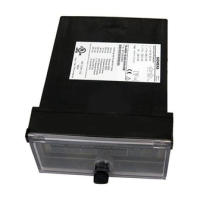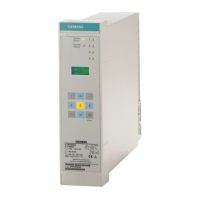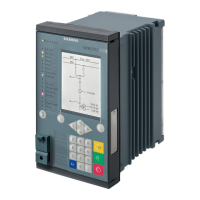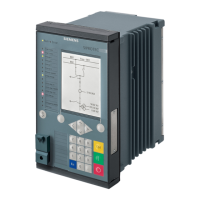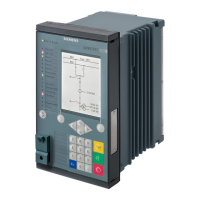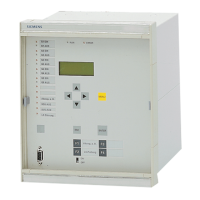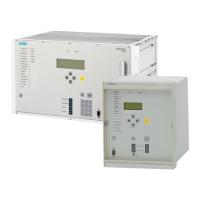•
After closing the circuit breakers, none of the measured value monitoring functions in the 7SD80 must
respond. If there was a fault indication, however, the Event Log or spontaneous indications could be
checked to investigate the reason for it.
– If current summation errors occur, check the matching factors (see Section 2.1.3 General Power
System Data (Power System Data 1) at margin heading “Connection of the Currents”).
– At the indication of balance monitoring there might actually be asymmetries of the primary system.
If they are part of normal operation, the corresponding monitoring function is set less sensitive (see
Section 2.14.1 Measurement Supervision under margin heading “Symmetry Monitoring”).
The currents can be read as primary and secondary values on the display at the front, or called up in the
PC via the operator or service interface, and compared with the actual measured quantities. The absolute
values as well as the phase differences of the currents are indicated so that the correct phase sequence
and polarity of individual transformers can also be seen.
•
The current amplitudes must be approximately the same. All three angles φ (Ι
Lx
–Ι
Ly
) must be approxi-
mately 120°.
– If the measured values are not plausible, the connections must be checked and corrected after
switching off the protected object and short-circuiting the current transformers. If, for example, the
phase difference between two currents is 60° instead of 120°, one of the currents must have a
reversed polarity. The same is the case if a substantial ground current 3 Ι
0
occurs:
3 Ι0 ≈ phase current → one or two phase currents are missing;
3 Ι0 ≈ twice the phase current → one or two phase currents have a reversed polarity.
•
The measurements are to be repeated after correcting the connections.
Polarity Check
If the device is connected to voltage transformers, the local measured values already allow a polarity check.
A load current of at least 5% of the rated operational current is still required. Any direction is possible but must
be known.
•
With closed circuit breakers, the power values are viewed as primary and secondary values on the front
display panel or via the operator or service interface with a personal computer.
•
The measured power values on the actual device or in DIGSI enable you to verify that they correspond to
the load direction (Figure 3-30):
P positive, if active power flows into the protected object,
P negative, if active power flows towards the busbar,
Q positive, if (inductive) reactive power flows into the protected object,
Q negative, if reactive power flows toward the busbar.
Therefore, the power results and their components must have opposite signs at both ends.
It must be taken into consideration that high charging currents, which might occur with long overhead
lines or with cables, are capacitive, i.e. correspond to a negative reactive power into the line. In spite of a
resistiveinductive load, this may lead to a slightly negative reactive power at the feeding end whereas the
other end shows an increased negative reactive power. The lower the load current for the test, the higher
the significance of this influence. In order to get unambiguous results, you should increase the load
current if necessary.
Mounting and Commissioning
3.3 Commissioning
SIPROTEC 4, 7SD80, Manual 241
E50417-G1100-C474-A2, Edition 02.2018

